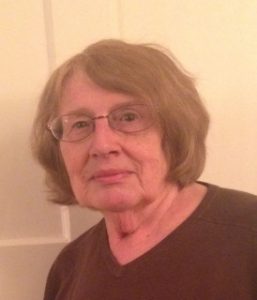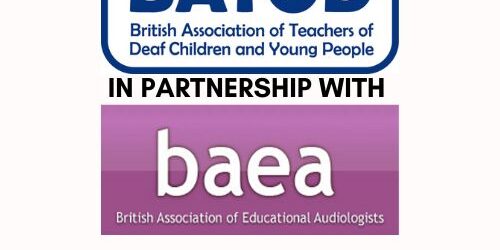The education of deaf pupils in mainstream schools

Provision for deaf pupils in mainstream schools has changed significantly over the years from 1960-2010. Of course, the ways in which deaf pupils are educated in mainstream can take a number of different forms:
a class for deaf pupils in a mainstream school
a school resourced to provide for deaf pupils and having a number of pupils who spend varying amounts of time in mainstream support for an individual deaf pupil in their local school.
And while today a range of different types of provision remain, the overall emphasis has shifted from special classes in mainstream schools to deaf pupils attending their local school and being supported there. And as well as there being variety in the provision, there is also variety in the terminology used to describe the situation including: Partially deaf units, Partially Hearing Units (PHUs), resource bases, resourced schools, mainstreaming, integration and inclusion. Powers (1990) in his research into secondary units asked 121 schools what the official title of their unit was. From 121 schools he obtained 25 different titles. While the differences were mostly small they do indicate some inconsistency in what schools felt the main function of their Unit was.
In the 1960s very few deaf pupils were educated in mainstream schools and where this occurred pupils were in Partially Hearing Units. Partially Hearing Units were classes, taught by a teacher of the deaf, attached to mainstream schools. They had started to develop in London and Manchester in 1947 and by 1962 there were 74. It is interesting to note that these were initially called Partially Deaf Units as the 1945 Ministry of Education ‘New Special School Regulations: Handicapped Pupils and School Health Service Regulations 1945’ had distinguished deaf pupils from partially deaf pupils. The term ‘partially deaf’ was only changed to ‘partially hearing’ in the government regulations of 1962.
However, the number of pupils in PHUs grew quickly. By 1973, in a comprehensive account of the situation at that time, Eileen Johnson a retired inspector of schools wrote; ‘Whereas the number of special school has remained fairly constant, there are now … more children in Units than in special schools for the deaf and partially hearing.’ She attributed this partly at least to parental wishes. ‘Many of them (parents) are demanding that their children should have schooling near their homes, that they should not go to boarding schools. They are demanding more Units and more teachers’. (Johnson 1973)
Growth in number of units 1962-1982
1962 1965 1970 1976 1982
43 74 212 340 502
However, despite the growth in the number of Units and the general view that they were successful, there were some concerns about this provision. Firstly, there was an issue of staffing. Often there was only one teacher of the deaf employed in a school. This could create a number of problems: management when the teacher was absent, the isolation of the teacher of the deaf from colleagues with experience of deaf pupils, and the fact that in some schools the teacher of the deaf was often asked to stand in when other teachers were absent. Secondly, as time went on and increasing numbers of deaf pupils were being educated in Units, the range of hearing loss within a Unit became more varied, and greater numbers of pupils with more profound losses were included, with implications for management and teaching. Research comparing deaf children in units with those in other provision was clearly difficult because of the problems of getting comparable samples. The characteristics of pupils educated in Units were likely to differ from those who continued in special schools. However, the general conclusion seemed to emerge that in Units academic attainment was at least equivalent or maybe better than other special provision, but social and emotional wellbeing could suffer. However, deaf education was to experience more fundamental changes as the whole of education for pupils with special educational needs underwent a major review. In 1978 the Warnock report was published, the findings of which were set out in the 1981 Education Act which was enacted in 1983. These discussions took place at a time when the rights of disabled people in general were receiving attention with emphasis on their right to be fully part of society.
The Warnock report put forward the following definition with respect to children in education.
A child will have a special educational need if s/he has a learning difficulty requiring special educational provision. The ‘learning difficulty’ includes not only physical and mental disabilities, but also any kind of learning difficulty experienced by a child, provided that it is significantly greater than that of the majority of children of the same age.
This imposed and emphasised the need to treat children individually in terms of their education needs rather than categorising them according to particular disabilities. While one can appreciate the positive aspects of this in its focus on a child’s need rather than label, there was a downside in that collecting data and monitoring the progress of children with a specific disability, such as deafness, became much more difficult as the information was not collected in this way. This situation has been remedied for deaf pupils by the BATOD survey, now known as CRIDE, which collects data from schools and services on the deaf children known to them.
Following the Warnock report, the 1983 Education Act stated that the education of children with SEN should, wherever possible, be carried out in ordinary schools. The position was refined through the 1980s and 1990s by a series of Acts which, as Kumsang and Moore suggest, ‘reconstructed special education’.
There was a shift in terminology from the 1980s to the 1990s. Whereas descriptions and research papers published in the 1980s talk of integration, by the 1990s this had changed to the term ‘inclusion’. This was a significant development. It shifted the emphasis of the 1980s where pupils with SEN who were integrated had to fit into a mainstream school to the situation in the 1990s, when a school had a responsibility to become inclusive environment. The onus was placed on the school to make adjustments in order to provide appropriate provision.
The number of deaf pupils in mainstream has increased significantly over the years. The 2011 CRIDE report states that in England there are at least 34,927 deaf pupils, of who 81% are mainstream schools. This includes 8% who are in schools with resourced provision. Exact comparisons over time are difficult to make because of variations in the way data has been collected, but it would seem that while just over 22,000 deaf pupils are in mainstream schools in 2010/11, in 1962 there was less than 500.
While mainstream education is now the dominant provision and accepted and endorsed my many, some have reservations, either concerning the notion of inclusion itself, or about aspects of the way in which it is implemented. From the beginning, and persisting today, some have held the view that inclusion is a cost saving device, either by design or by practice. Cost cutting itself is not, of course, a criticism of an education system; it is the impact of the cuts that is relevant. It may also be that the implication of any reservations due to cost cutting is not that all pupils should go to special school provision, but that more could be spent on education in mainstream.
However, there remain questions about how fully deaf pupils can be included. For those using spoken language there are concerns that no matter how good the support, there are some pupils who will find accessing the spoken language of the classroom and the extent to which they can participate fully is questioned. Recently, during the 1990s and 2000s, technological developments have had a major impact on the possibilities for more deaf pupils to access and use spoken communication in mainstream schools. Cochlear implants have a significant role here. The first implant of a deaf child in the UK was a deafened child who was implanted 1987 although cochlear implants for children born deaf was seen as much more controversial and the first operation of a born deaf child did not take place until 1993. However by 2010/11 the CRIDE report says there are 2184 deaf pupils with implants in England, about 6% of deaf pupils, and one should bear in mind that only pupils with a significant hearing loss, will be offered an implant. Further developments include digital hearing aids, bone conducting hearing implants (BCHI), FM systems and sound field systems. Other technologies too may be relevant particularly the various uses to which computers in their many manifestations may be used. These developments are contributing to the greater inclusion of deaf pupils in mainstream classrooms. Nevertheless, these pupils are still deaf and for some access to spoken language and thus full participation remain an issue.
Furthermore, particular issues have been raised by those who perceive deaf people as a linguistic and cultural minority. For deaf people whose primary language is sign language, their community is that of deaf people who use sign language and with whom they can communicate. Inclusion then for deaf pupils who sign should be with other signing deaf children. They cannot be said to be included in school if they cannot easily communicate or follow the communication of fellow students. This view is supported by the Salamanca (UNESCO) statement of 1994 ‘Owing to the particular communication needs of deaf and deaf/blind persons, their education may be more suitably provided in special schools or special classes and units in mainstream schools’. Of course many deaf pupils who sign are now being educated in mainstream school and the question here is whether their needs can be met, and whether the goal of education to develop participation in the wider society is more relevant than the need for a larger peer group with a shared language.
Most of the recent research looking at inclusion and integration has focussed on in depth studies of smaller groups of pupils. It has looked at language interactions (Gregory and Bishop, 1987: Hopwood, 2003) or social and emotional wellbeing (see review by Watson and Parsons 1991 for example). Other research has looked the changing roles and responsibilities of teachers of the deaf in mainstream settings as one impact of inclusion has been its impact on this (see for example Lynas et al 1997). No longer can the major responsibility of teachers of the deaf be the teaching of deaf pupils through face to face contact. It has become a more managerial position, including working with teachers in mainstream by providing support and advice. Research suggests there is great variation in mainstream teachers understanding and recognising the needs of deaf pupils (for example Iantaffi et al 2003).
During the period which is the focus of his website, 1960-2010, there have been many significant changes in the numbers of children and the ways in which they are educated mainstream schools. The overall shift has been from the vast majority in 1960 being educated in special schools to the vast majority in 2010 being educated in mainstream schools. However this has not been a simple progression but has gone through a number of stages. Each development has seemed to be met with enthusiasm and endorsed but there have always been some reservations. Maybe in the end the only conclusion will be that there is no one approach that is best for all.




